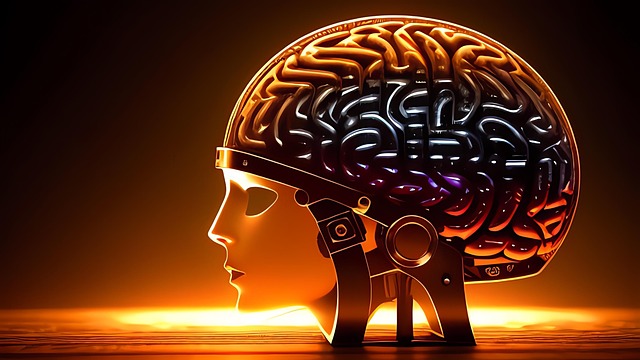Users must critically evaluate ChatGPT outputs for biases reflected from its training data, encompassing gender stereotypes and cultural prejudices. Strategies include digital literacy, fact-checking with NLP tools, and staying informed via learning management systems. Diverse data analysis tools, advanced text analytics, and regular updates by developers are crucial to mitigate bias. Effective training data management involves meticulous sourcing, user critical thinking exercises, and leveraging reliable sources for fairness in ChatGPT and other LLMs.
“Unveiling the intricacies of ChatGPT output bias is an essential step towards harnessing its full potential. This article delves into the complex world of AI biases, offering a comprehensive guide to navigate and mitigate them. We explore the underlying causes, from data training to algorithmic tendencies, providing real-world examples to illustrate biased responses. By understanding these factors, users can employ effective techniques for accurate information retrieval. Additionally, we emphasize the critical role of training data management in reducing ChatGPT’s biases, ensuring a more inclusive and unbiased conversational experience.”
- Understanding ChatGPT Bias: Causes and Examples
- Identifying Biased Responses in ChatGPT Conversations
- Mitigating Bias: Techniques for Accurate Information
- Training Data Management: Key to Reducing ChatGPT Biases
Understanding ChatGPT Bias: Causes and Examples

Understanding ChatGPT Bias: Causes and Examples
ChatGPT, like any AI language model, isn’t immune to bias. This bias can stem from several factors, including the data it was trained on. The internet is a vast repository of human knowledge and interactions, but it’s not always a source of factual accuracy or neutrality. ChatGPT might reflect societal biases present in these training datasets, leading to outputs that perpetuate stereotypes or exhibit prejudice.
For instance, if the model has been trained on text containing gendered language or biased views, it may reproduce these when generating responses. Plagiarism avoidance guide and digital literacy skills can help users identify and mitigate such issues. Time management strategies for students are also crucial in ensuring that ChatGPT outputs are not only accurate but also ethically sound. Moreover, being mindful of the limitations of AI and staying informed about the latest advancements can help users navigate these biases effectively. To ensure fair and responsible use, consider reaching out to learning management systems for guidance.
Identifying Biased Responses in ChatGPT Conversations

Identifying Biased Responses in ChatGPT Conversations requires keen observation and critical thinking. When interacting with ChatGPT, users may encounter responses that perpetuate stereotypes, reflect cultural biases, or present skewed information. These biases can stem from the underlying data used to train the AI model. By analyzing the text for inconsistencies, factual errors, or any signs of discrimination based on race, gender, or other demographics, users can quickly recognize biased outputs.
Moreover, examining the context and tone of responses is crucial. ChatGPT conversations should foster an inclusive environment, reflecting diverse perspectives and viewpoints. If a response tends to favor certain narratives or avoids addressing sensitive topics altogether, it may indicate a bias. Utilizing data analysis tools designed for natural language processing (NLP) can help identify patterns and anomalies in ChatGPT outputs. By comparing these findings with established facts and seeking clarification from the model’s developers, users can ensure fair and unbiased interactions, ultimately enhancing the overall quality of AI-driven communication. Consider reaching out to our team at time management strategies for students for more tailored insights on navigating such challenges.
Mitigating Bias: Techniques for Accurate Information

To mitigate bias and ensure accurate information from ChatGPT, several techniques can be employed. One key approach involves diverse data analysis tools that introduce broader perspectives into the training process. By leveraging a variety of data sources and algorithms, developers can create more inclusive models that reduce the chances of perpetuating existing biases. For instance, using advanced text analytics and sentiment analysis tools allows for deeper understanding of user queries, enabling ChatGPT to generate responses that align with various learning styles.
Additionally, philosophy and ethics discussions play a crucial role in refining the model’s output. These conversations help identify and address potential ethical dilemmas, ensuring that ChatGPT’s responses are not only factually correct but also respectful and inclusive. Encouraging ongoing dialogue and regular updates based on user feedback further strengthens the model, making it more adaptable to evolving societal norms and learning preferences. Visit us at remote learning best practices anytime for more insights into these innovative approaches.
Training Data Management: Key to Reducing ChatGPT Biases

Training Data Management plays a pivotal role in mitigating biases within ChatGPT and other Large Language Models (LLMs). The diversity and representation of data used to train these AI systems directly influence their output quality and fairness. Biases often arise when training datasets are not comprehensive, lacking varied perspectives and underrepresented demographics. To reduce such biases, developers must employ meticulous data management strategies.
One effective approach involves implementing rigorous citation methods for data sourcing, ensuring transparency and accountability in the data collection process. This includes comparing different sources and validating information from various reliable publications to promote accuracy and minimize biased interpretations. Additionally, encouraging users to engage in critical thinking exercises when interacting with LLMs can help identify and challenge any potentially biased responses. By fostering a culture of curiosity and analytical thinking, users can actively contribute to refining the models over time. Visiting us at Creative Writing Prompts anytime offers more insights into harnessing AI while promoting inclusive language development.
In conclusion, while ChatGPT has revolutionized natural language processing, its output bias remains a significant concern. By understanding the causes, such as skewed training data and algorithmic tendencies, we can identify biased responses through careful scrutiny. Mitigating this bias involves techniques like diverse data sets and human review, emphasizing the crucial role of training data management. As we navigate the evolving landscape of AI-human interaction, addressing ChatGPT biases is essential for fostering accurate, unbiased information and ensuring a more equitable digital future.








Leave a Reply